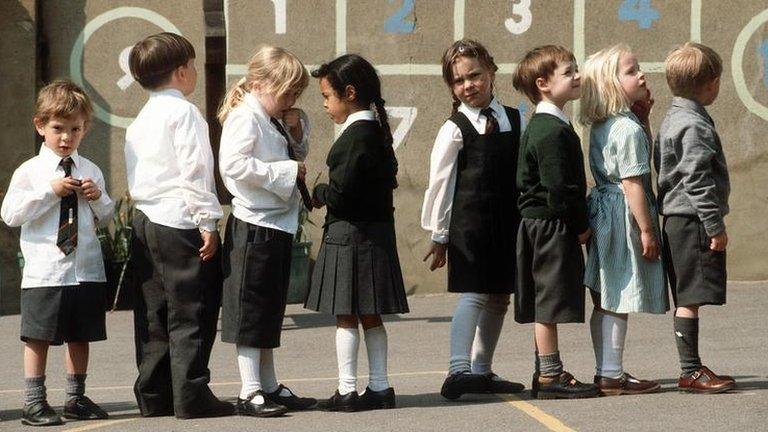School uniform grants still unequal
- Published
- comments
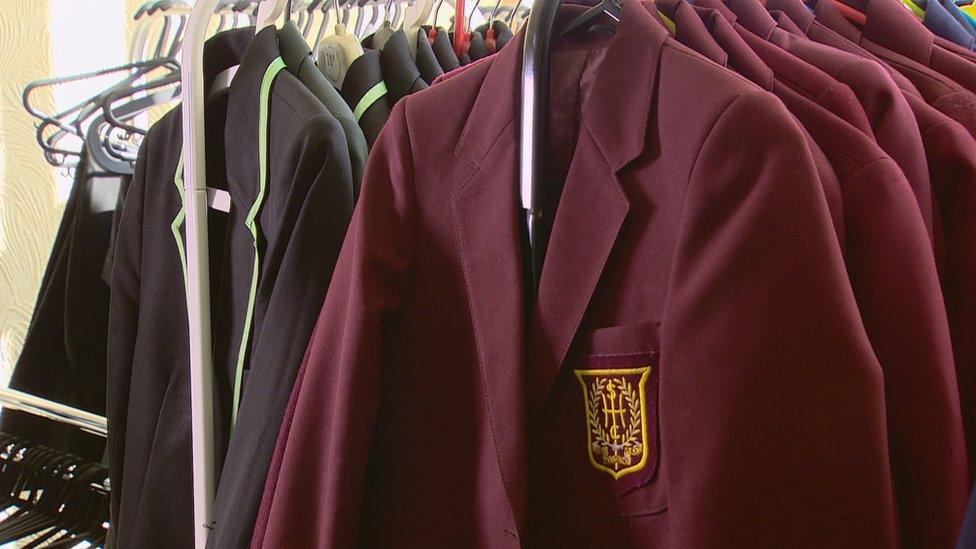
The amount low-income parents can claim in school clothing grants still varies hugely around Scotland, a BBC Scotland investigation has found.
In West Lothian they can receive up to £110 per child, while in North Ayrshire it is a maximum of £40.
Last year, the Scottish government pledged to meet councils over setting a minimum level but it never happened.
Education secretary John Swinney has now said he wants a voluntary agreement for councils to set a nationwide rate.
Mr Swinney said there would be a range of views on the minimum rate but suggested it "should probably be set about £70".
That was the amount proposed by a Scottish government working group in 2009, external.
Eight years later, just 10 of the 32 councils have met that recommendation.
The average clothing grant for eligible parents is now £63.80.
Research by campaign group The Poverty Truth Commission suggested the actual cost of kitting out a child for school was £129.50, external, even when shopping at supermarkets and bargain stores.
Mr Swinney told BBC Scotland the Scottish government had the power to set a minimum rate but he thought "dialogue" with the local councils was the best way to achieve it.
Local government body Cosla refused to speak to BBC Scotland on-camera but issued a statement saying they would be keen to meet to discuss Mr Swinney's proposal and "to find out what additional money he is prepared to offer to facilitate such an agreement".

What is the school uniform grant?
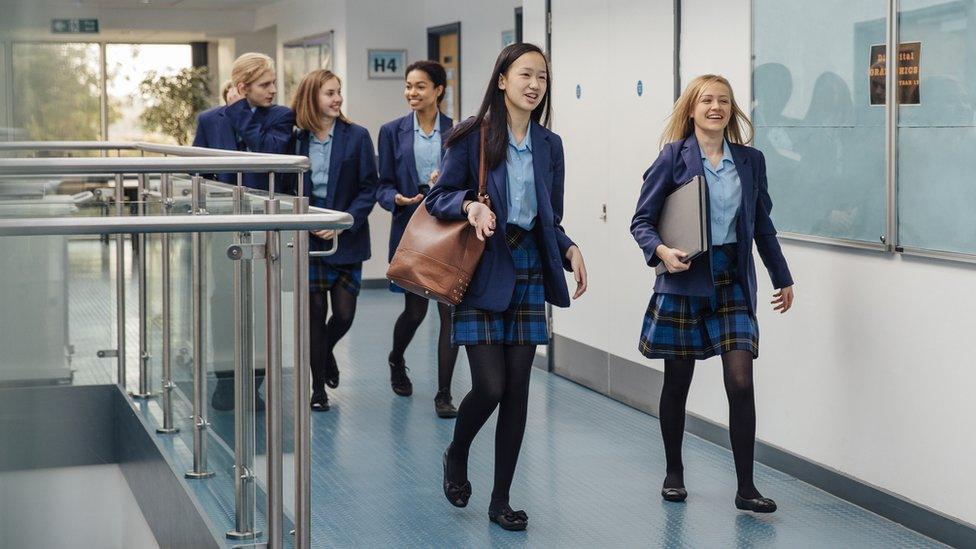
The 1980 Education Act, external stipulates that local authorities must make provision for the clothing of pupils who would otherwise be unable to afford schoolwear.
Councils, rather than the Scottish government, are responsible for deciding the eligibility criteria, the grant amount and application process.

Use the INTERACTIVE CALCULATOR, external developed by BBC data journalist Marc Ellison to see how far you can stretch a council clothing grant.
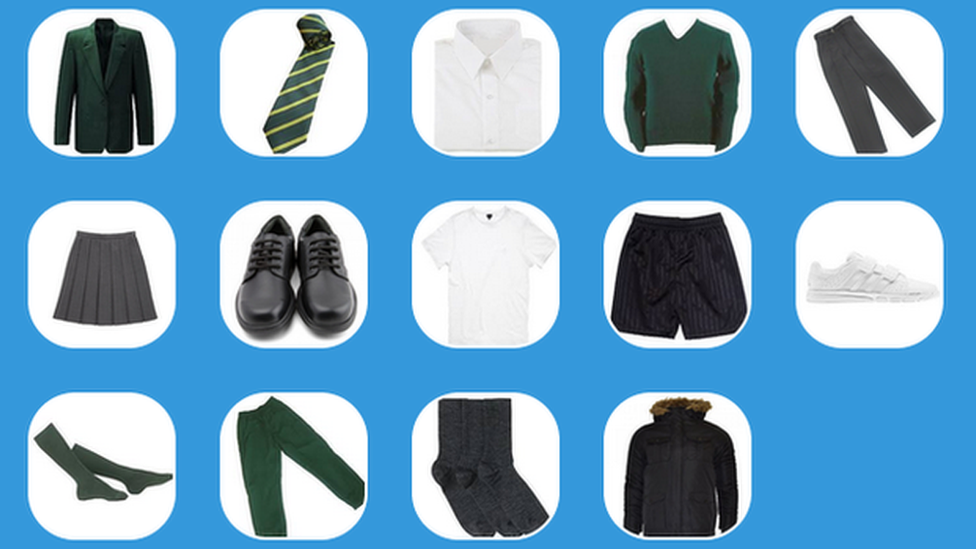
Try and clothe a child on a council clothing grant using BBC Scotland's interactive calculator

How much do councils pay?
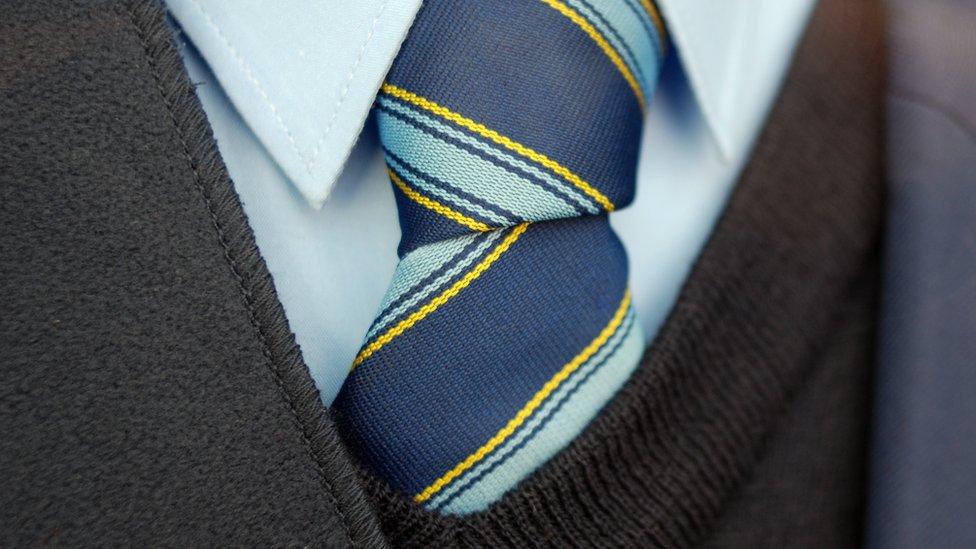
In 2015, when BBC Scotland first carried out the survey, the majority of Scotland's 32 councils had failed to increase the level of school clothing grants for more than a decade.
In the two years since, just eight of Scotland's 32 local council areas have increased their grants.
Seventeen councils have not increased the rate in more than a decade.
In 2005, the average secondary school grant was £50.09. More than a decade later, 13 councils still pay less than that amount.
The average maximum grant offered by councils is now £63.80, still well short of the £70 minimum recommended in 2009.
The lowest maximum grant levels were in North Ayrshire (£40), Moray (£45), and the Scottish Borders (£45).
While some councils paid almost double the amount offered by the lowest, such as West Lothian (£110), Dundee (£100), East Ayrshire (£100), West Dunbartonshire (£100) Highland (£90) and Inverclyde (£90).
Angus Council had the lowest rate in 2015, having reduced it to just £20. It has since raised the grant to £50, the same as it was in 2005.

Case study
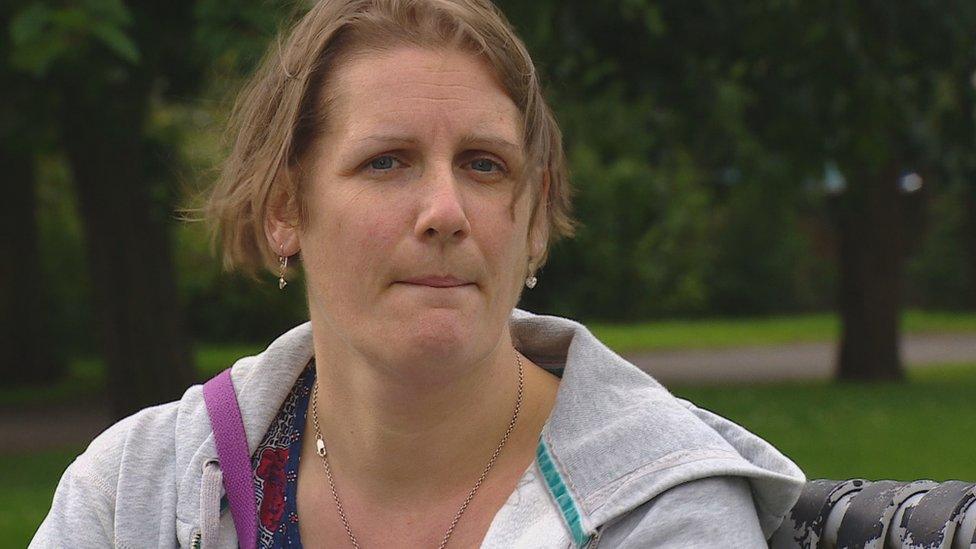
Jackie from Glasgow says she is struggling to afford uniforms for her children
Mother-of-three Jackie says she has not yet received her grant from Glasgow City Council and is worried about not being able to afford new clothes before her children go back to school next week.
She says her partner works in a low-paid job and she is out of work so the council's grant to buy school clothing is important to her.
"I really need the uniform grant and I haven't received it this year because of an admin mistake because they're changing the system," she says.
"So it's becoming really stressful for me. I'm having to run out on very little money and try to buy last-minute things and use things from last year on the first week."
Kids in rags
Jackie says: "It's important how your kids look when they go into school. People who are struggling don't want to look like they're struggling.
"For the first week, I feel as though I'm going to be sending my kids in rags, basically."
Jackie says she can't see why the grant is not a standard amount wherever you are in the country and she thinks it should be higher than the £52 Glasgow offers.
She says: "The bar should be set a lot higher - it should be more than £100 at least - definitely.
Brand new uniform
"Things just cost too much - for a badged polo shift dress it can be as much as £12 to £15, the last time I looked at the prices - and that's just for one. Realistically you would need five each."
"I have to try to hide my stress from the kids. I don't want them to pick up on it. I want them to go in feeling like they have a brand new uniform.
"I'm not even sure if I'll be able to get their hair cut by the time they go back. I'm just going to have to gel it for the first week and hope that it looks respectable enough.
"It's very stressful and it's very upsetting at times."

Action to set a national minimum rate
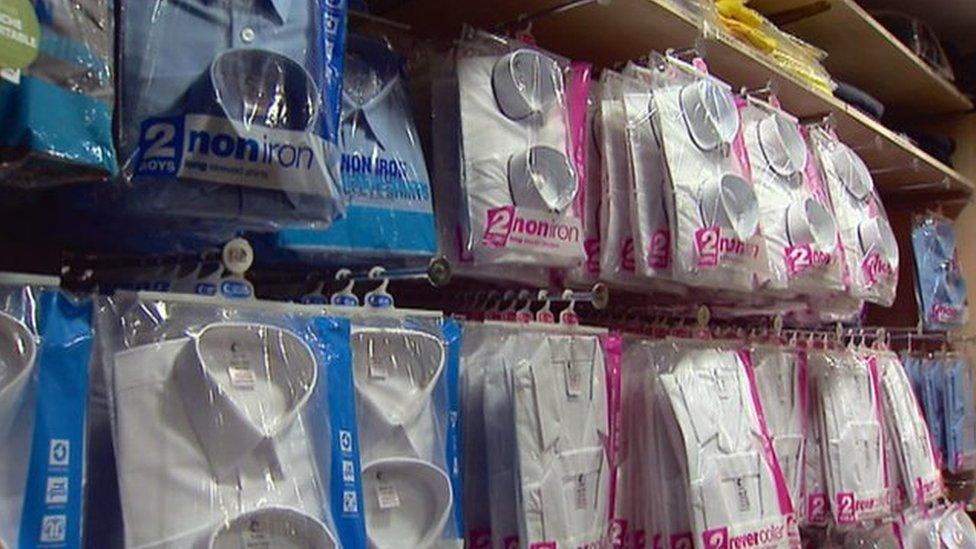
After pressure from anti-poverty campaigners at the start of the last school year, Mr Swinney, the deputy first minister, promised to meet Cosla to discuss the school clothing grant and agree eligibility criteria and a minimum grant level.
He said this would ensure those families across Scotland who need support receive it.
That meeting did not take place.
Mr Swinney has now told BBC Scotland: "The Scottish government took steps in legislation to establish the power to set a minimum rate - but we judged the most appropriate way to take that forward was by dialogue with local authorities to avoid regulation in this respect."
He said: "The government would prefer to take forward a voluntary approach with local government but we have the power within legislation to establish that minimum level if we choose to do so."
Mr Swinney added: "The evidence that has been looked at suggests that the minimum level for the clothing grant should probably be set about £70. And a lot of local authorities are paying either at that level or in excess of that level.
"There will be a range of different perspectives around the levels for a minimum grant in this respect. I fully recognise the significance of the cost of children going to school and being properly equipped for school."
A statement for local government body Cosla said: "Scotland's Councils are committed to doing the very best for the communities they are elected to represent - especially those people in the most need.
"However, years of UK government austerity and a lack of investment in public services takes its toll.
"This coupled with year on year cuts to council budgets from the Scottish government has meant that councils have had to make extremely difficult decisions across all areas of their expenditure."

Growing demand for school uniform banks
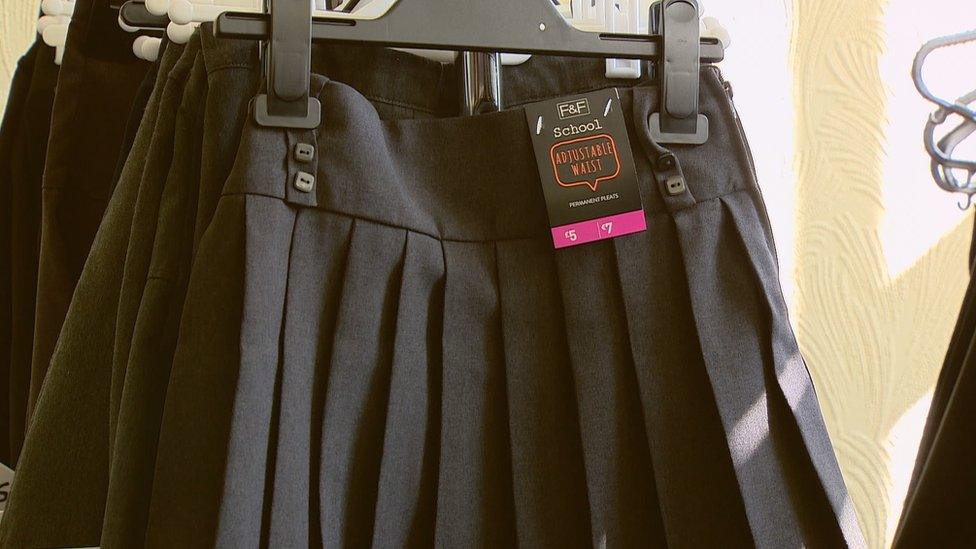
Julie Hepburn runs the Cumbernauld and Kilsyth Care School Uniform Bank, which provides school uniform free of charge to families in need, through a system of referrals.
The clothing consists of new and second-hand items.
She says there is growing demand across the country for services such as this.
"I've spoken to volunteers running the school banks around the country and we're all seeing a huge surge in demand this year," Ms Hepburn says.
"Partly people will be more aware of us and the service we offer but the demand is growing all the time.
"A number of the uniform banks are struggling to meet demand."
Ms Hepburn says she is always moved by the appreciation people show when she delivers a uniform package.
"Personally I find it very very difficult when we do drop off donations," she says.
"Sometimes people have been so stressed and worrying how they're going to get this uniform, when it does arrive they're quite emotional about it as well."
According to Ms Hepburn, the school clothing grant, even for those who are eligible, does not cover all the items they need.
She says: "If you are trying to kit out a teenager and you're trying to get shoes and a coat and a bag and a blazer - blazers are now compulsory in a lot of secondary schools.
"We were trying to get one this week that was £45. If you're only getting 70-odd quid that is not enough to cover the uniform your child needs."
- Published12 August 2015
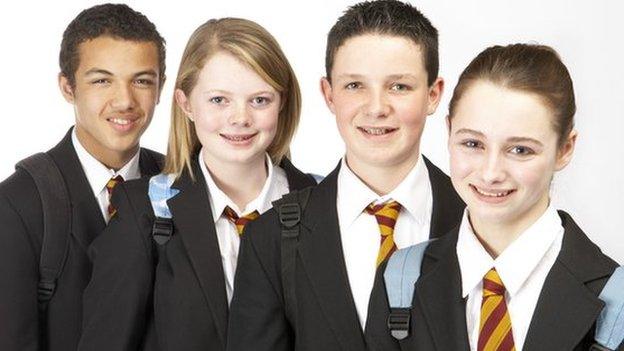
- Published8 August 2016
